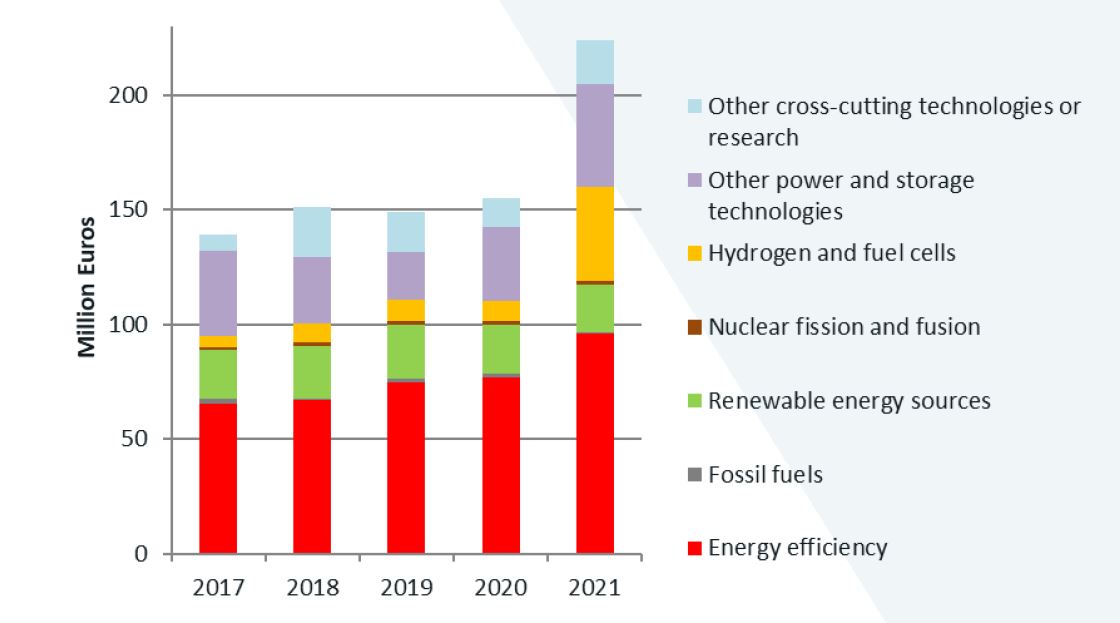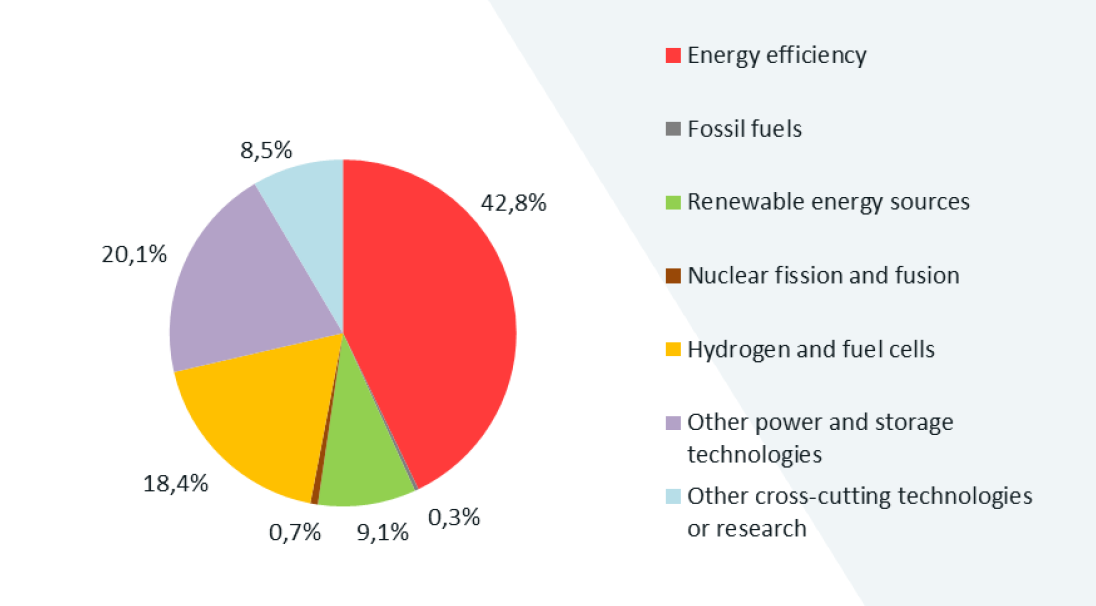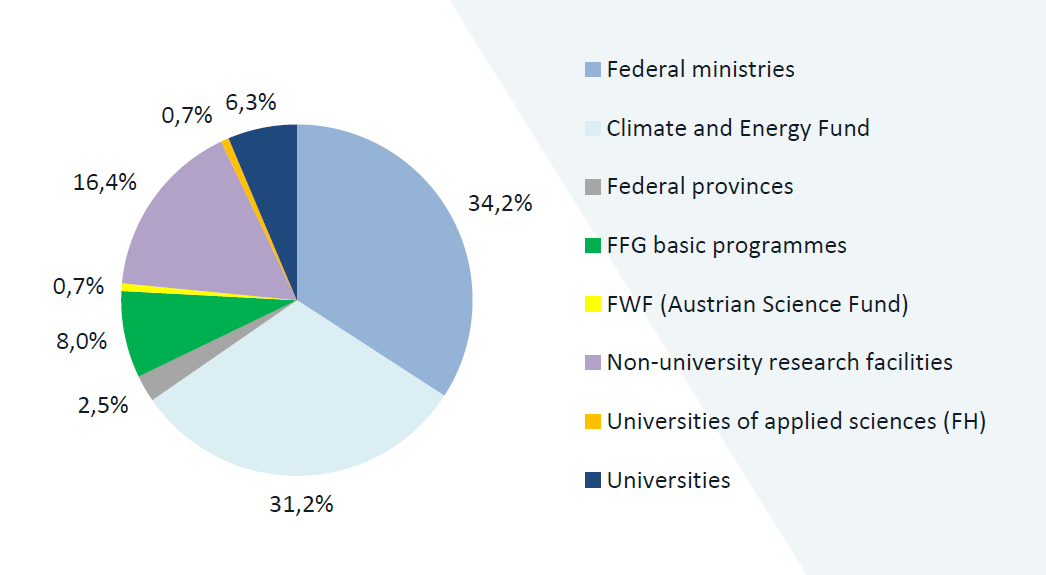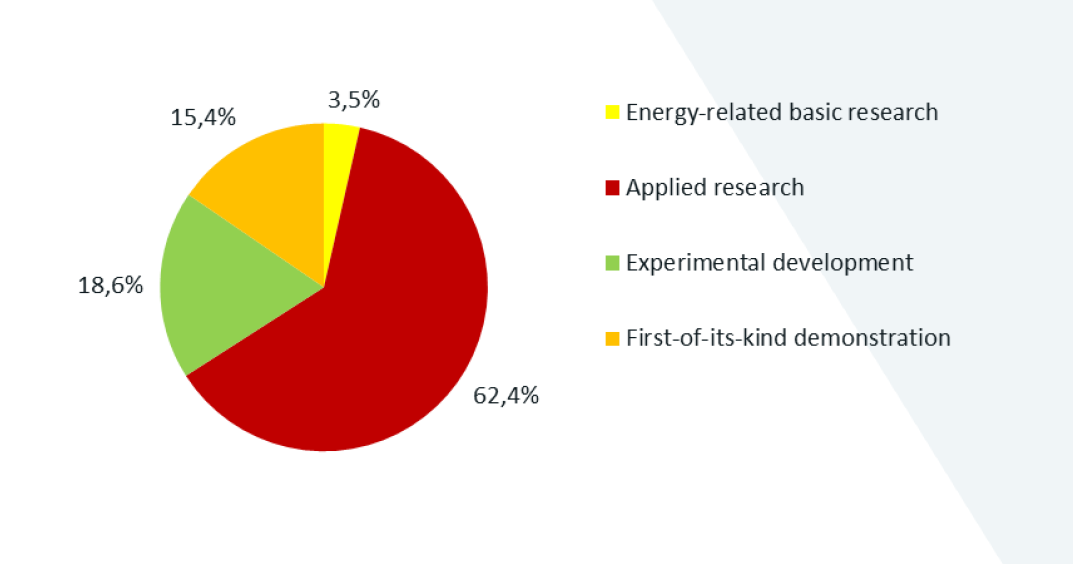Energy R&D 2021: Public Expenditures in Austria
Bibliographic Data
Energy Research Survey 22/2022A. Indinger, M. Rollings
Publisher: BMK
English, 123 pages
Content Description
In 2021, about 1,200 projects and activities for publicly funded energy-related research, development and first-of-a-kind demonstration amounted to 224.1 million euros. A year-on-year comparison shows a substantial increase in public energy research expenditures of 68.9 million euros or 44.4% for the year 2021 and thus an all-time high.
As in previous years, the area of "energy-efficient end-use technologies" is in first place with expenditures of 96.0 million euros. Electromobility is an important field of research with a total of 29.9 million euros in 2021, as are the subcategories energy efficiency in industry and energy-efficient buildings, each with 15 million euros, and smart cities with 13.3 million euros.
The two areas "smart grids and storage" with 45.1 million euros (due to a strong increase of activities of some additional 12.7 million euros) and "hydrogen and fuel cells" with 41.1 million euros follow by a comparatively wide margin. Hydrogen showed a remarkable surge by a factor of ten, propelling this subcategory to 31.8 million euros.
"Renewable energy" (especially biomass and photovoltaics) and "cross-cutting issues" (which include projects that are located in two or more thematic areas) added 20.5 million and 19.0 million euros, respectively. The thematic areas "nuclear energy" (1.6 million euros) and "fossil fuels" (0.8 million euros) are far behind in terms of funding, neither of which is a priority in publicly funded energy research in Austria.
More than three quarters of the expenditures presented in this report were directly financed by funding authorities (federal government, provinces and funds). The remainder came from research institutions (including universities) provided with equity capital from federal or provincial budgets.
Expenditures of federal ministries – either directly or via programmes within their fields of responsibility – totalled 76.5 million euros, with the Federal Ministry for Climate Action, Environment, Energy, Mobility, Innovation and Technology (BMK) investing 66.7 million euros of that amount. The Climate and Energy Fund spent 70 million euros in 2021. Both BMK and the Climate and Energy Fund had been responsible for the strong overall growth in expenditures in 2021, 32.7 million euros (24%) were funds from the economic stimulus package that exceeded the ordinary budget.
The Austrian Research Promotion Agency (FFG) as the national funding agency for industrial research and development provided 17.9 million euros with its permanently open calls of general programmes. In addition, the FFG executes a bundle of thematic and structural programmes on behalf of ministries and the Climate and Energy Fund. Total expenditures of the nine federal provinces of Austria – with Styria in the lead with 2.7 million euros in 2021 – amounted to 5.5 million euros. Expenditures of non-university research institutions based on equity capital provided by the government were 36.7 million euros; the Austrian Institute of Technology AIT invested a considerable part of this sum. Universities (led by Vienna's University of Technology) and universities of applied sciences spent 14.2 and 1.6 million euros in equity capital, respectively.
Overall, 62.4% of the means were used for applied research and 18.6% for experimental development. Expenditures for first-of-a-kind demonstration amounted to some 15.4% in 2021. Basic research summed up to 3.5% and represented the category with the smallest share in this analysis. The importance of energy research – measured in terms of public funding – has stagnated in the last decade but saw a significant increase from 0.041% in 2020 to 0.056% in 2021 as a share of the gross domestic product.
An additional gender analysis revealed that women headed the consortia of 53 out of 299 projects. On average, however, female consortium leaders managed smaller projects than their male counterparts. In 37.8% of projects of the analysed project portfolio, women were responsible for the technical or scientific part of at least one organisation in the project consortium or led the consortium (2020: 32.7%).
The complete study is only available in German:
Energieforschungserhebung 2021 - Ausgaben der öffentlichen Hand in Österreich. Erhebung für die IEA
Downloads




